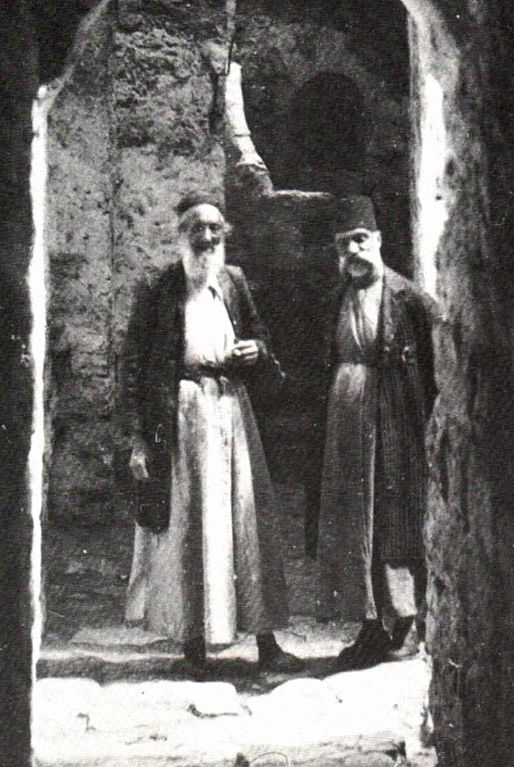Teen Vogue, a Conde Nast publication aimed at teenage girls with a circulation of over a million, has shifted away from a focus solely on fashion and shopping to include political issues. Its February 27 piece entitled “The Israeli-Palestinian Conflict: What You Need to Know” suggests that shift also entails publishing factually shoddy commentary.
Despite the ambitious title and long length, the one-sided account omits many things that teens trying to learn about current events ought to know and instead reads like a fact sheet from the Palestinian side of the issue.
Author Emma Sarran Webster has no apparent knowledge or background on the complex issues involved, billing herself as an expert on health and beauty with a “deep love for social media and cat videos.” She relies heavily in the article on a single “expert,” University of Wisconsin professor Nadav Shelef. Shelef’s writing, which has been praised by far-left professors, focuses heavily on settlements, and as a result, Webster’s article also focuses overwhelmingly on “controversial” settlements as the central issue. This, while completely ignoring Palestinian incitement and incentivizing of violence, as well as Palestinian intransigence. In fact, Webster includes an entire four-paragraph section subtitled, “What are settlements, and why are they so controversial?”

Yet, there is no section on Palestinian cash payments to convicted terrorists or to the families of terrorists who were killed, and there is no section that discusses the glorification of violence in the Palestinian government and society.
The article also omits discussion of historical Jewish ties to Israel and, unconscionably, the repeated Palestinian rejection of extensive Israeli peace offers. Where was the section on Arafat and Abbas walking away from the creation of a Palestinian state?
In addition, the article contains several misrepresentations: it references “Palestinians” who lived a century ago, and says that in 1948 Arab nations “began fighting on behalf of Palestine.” It misrepresents UN Resolution 242 and the Fourth Geneva Convention, and fails to put UN statements in the context of that body’s well-documented bias.
Author Emma Sarran Webster begins her article:
Earlier this month, Donald Trump welcomed Israel’s prime minister, Benjamin Netanyahu, to the White House. During the leaders’ joint press conference, the topic of controversial Israeli settlements and the country’s ongoing conflict with the Palestinians was broached, with Trump turning to Netanyahu and saying, “I’d like to see you hold back on settlements.”
As noted above, this introduction sets the tone of the entire article, which devotes a full four-paragraph section to the issue of the settlements and why they are “so controversial.” In contrast, the author devotes exactly zero paragraphs to the Palestinian “pay-to-slay” scheme, to glorification of violence in music videos, cartoons, schoolbooks and children’s shows and even in statements by Palestinian President Mahmoud Abbas, and to the Palestinian rejection of multiple recent two-state offers.

Distorting History
First, though, Webster (whose bio includes the fact that the beauty product she’s loving right now is YSL’s Glossy Lip Stain and whose other articles for Teen Vogue include, “Spring Break Decor Collection Includes a MERMAID Blanket”) attempts to provide some background. She tells us:
Israel and the Palestinians have technically been fighting for control of the same territories for nearly a century, according to NPR, but the heart of the conflict dates back to the 1940s. Jews, fleeing persecution in Europe, had long been fighting to establish an official Jewish state in the biblical land of Israel, which was a majority-Arab territory referred to as Palestine.
Webster omits that there has been a continuous Jewish presence in Jerusalem for 3000 years, and that as far back as 1820, Jews were the largest ethnic group in Jerusalem. In contrast, the concept of a distinct Palestinian Arab identity originated only in the mid-twentieth century. Until 1948, in fact, it was Jews living under the British Mandate that were referred to as “Palestinians.” Arabs in the region considered themselves “south-Syrians,” or part of the larger Arab nation.
Webster does correctly note that it was Arabs that rejected the 1948 partition plan. She claims, however, that in 1948 Egypt, Syria, Jordan, and Iraq (she omits Lebanon) “invaded Israel and began fighting on behalf of Palestine.” Aside from the fact that there was no Palestine, if those other Arab countries had truly been fighting on behalf of the local Arab population, it is unclear why Egypt and Jordan would seize territories for themselves. And, while she correctly notes that Jordan took control of eastern Jerusalem as a result of the 1948 War, she fails to note that when it did so, it expelled all of the Jews then living there. She also incorrectly claims that there was a peace agreement in 1949 – in fact, an armistice agreement was signed, but not a peace agreement. The Arab states expressly rejected peace with Israel multiple times.
The article goes on, “it was officially referred to as ‘mandatory Palestine’ because of the British Mandate for Palestine.” It does not seem to occur to the writer to ask, where does the term “Palestine” come from? After defeating a Jewish rebellion, it was the ancient Romans that gave Judea the name Palestine, “in an attempt to minimize Jewish identification with the land of Israel.”
Exclusive Focus on Settlements
Next, Webster returns to the “controversial settlements.” She mischaracterizes UN Resolution 242, claiming that it “emphasized the ‘inadmissibility of the acquisition of territory by war,’” and implying that the Resolution contemplates that Israel will eventually give up all of the West Bank. In fact, the drafters of the Resolution have explicitly stated that it presumed that Israel will give up only part of the West Bank, because it acquired the territory in a defensive war and not through an act of aggression. Moreover, the armistice lines did not represent final borders. Indeed, the drafters of 242 saw those lines as indefensible and likely to invite further aggression.
The author similarly mischaracterizes the Fourth Geneva Convention when she writes that, “per international law as outlined by the Fourth Geneva Convention, it is illegal for an occupying power to move its civilian population into the territory it occupies.” Because the West Bank was not the legally held territory of any party to the Convention at the time that Israel captured it, however, this provision is not applicable to the West Bank. Moreover, even if it were, many legal scholars note that it prevents only forcible transfers, and not the voluntary movement of Jewish settlers into Judea and Samaria.
Next, Webster tells readers that “the other issue is that the Israeli settlements and construction make it difficult for Palestinians to move freely within the West Bank and essentially dilute what could potentially be a sovereign Palestinian state.”

By claiming that Jewish homes in the West Bank “dilute” a Palestinian state, Webster is credulously accepting the premise that Jews should not be allowed to live in that state. This is despite the fact that two million Arab citizens live in Israel with full equality under the law.
In discussing the passage of UN Resolution 2334 in December, she fails to note the significant opposition to it, including a bipartisan and overwhelming condemnation of the measure from the US Congress.
Ignoring Palestinian Intransigence
Next, Webster asks “What are the “one state” and “two state” solutions we keep hearing about?” Regarding the two-state solution, Webster again cites the same “expert,” who says, “the two-state solution has been on the table for 80 years ‘in one form or another,’ and conversation today largely revolves around how the territories should be divided.”
What Webster doesn’t tell her readers is that it was Palestinian leaders who rejected the two-state solution in 2000, in 2001, and in 2008. Instead, Webster states, without qualification, that “Palestinian leaders have publicly advocated for a two-state solution.”
These things, too, are some of “what readers need to know” about the Israeli-Palestinian conflict.
Originally published at CAMERA.org.

